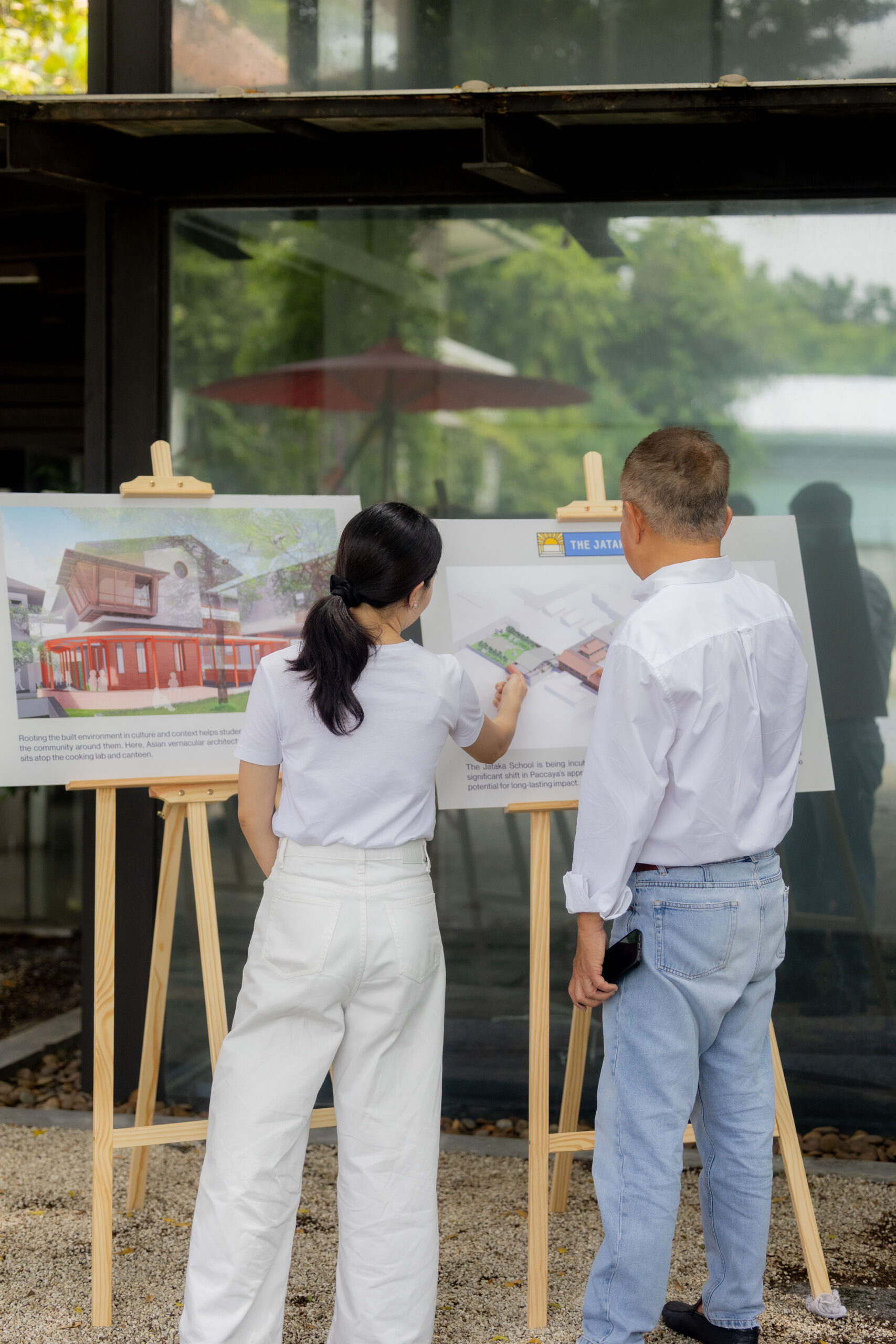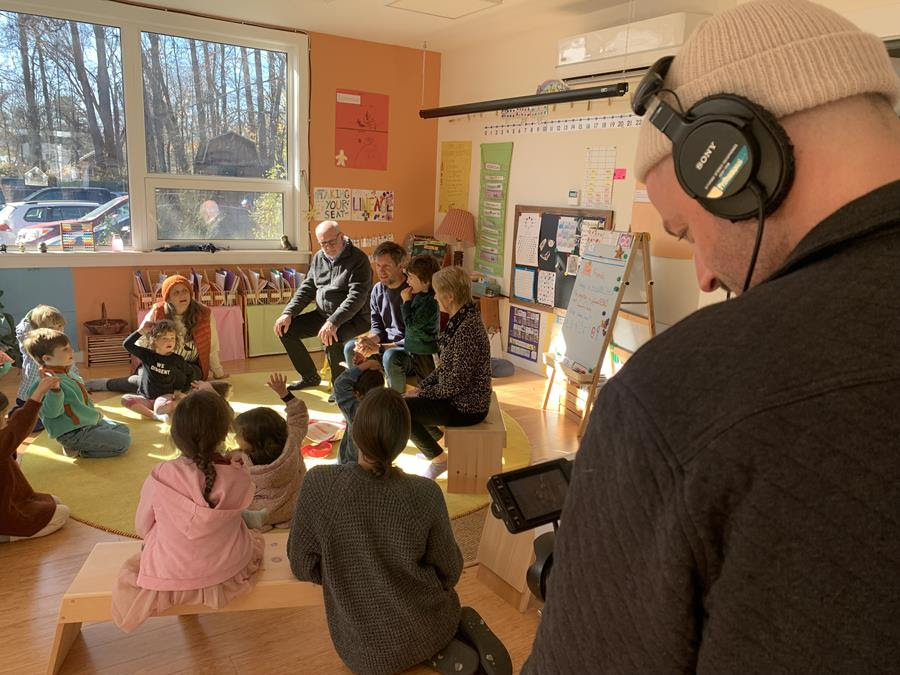
A Global Dharma Education Initiative
Middle Way Education

When it comes to dharma education for children, Middle Way Education (MWE) has taken a “heaven and earth” approach. Heaven, in this case, is a vast, timeless vision inspired by Dzongsar Khyentse Rinpoche to create a gold standard of Buddhist education for children. We are aiming high. Our mission is to research and develop a new model of education that supports parents and school leaders around the world in introducing the dharma to children.
Earth is MWE’s work on the ground at camps and partner schools like the Middle Way School of the Hudson Valley, a pre-K to 6th grade independent school in New York State where the vision can be experienced in real time. Each day offers an opportunity to learn and to develop the model. It is truly a collaboration between students, teachers, parents, and administrators—a chance for the dharma to be harmoniously woven into a modern learning environment.
It was certainly a challenge to launch this project without the guide rail of a comprehensive set of relevant education resources. While Buddhism offers an abundance of frameworks and systems for teaching the dharma, few, if any, are designed specifically for children. There is no educational theory; there are no time-tested methodologies or coherent sequences of developmentally appropriate dharma lessons, songs, and lesson plans. We needed these and many other elements that make up a modern curriculum. We had to be creative, resourceful, and also a little brave.

Earthy, engaging lesson plans alone do not make for a heavenly, paradigm-shifting curriculum. Teachers and school leaders need to have defined outcomes with benchmarks and standards that can be measured, scoped, and sequenced.
Before we took our seats, we surveyed the terrain. In 2016, we looked at as many Buddhist schools and programs for children as we could find. This research became the basis of our online network, which continues to expand. The resulting white paper illuminated the traps we could fall into and the gaps we needed to fill. We also looked into best practices in pedagogy based on neuroscience. Through that research we made an unusual choice: to steer away from the temptation to force our model into one of the many numeric lists available in Buddhism—like the four Noble Truths, twelve nidanas (twelve links of dependent origination), six paramitas (six perfections), and so on. We needed to start with children’s experience, taking into account physical, emotional, and intellectual growth (body, speech, and mind) and then mapping concepts and practices to meet students in developmentally appropriate ways.
We also spoke with young, second-generation dharma practitioners to learn from their stories. As we know, not everyone born into a Buddhist family becomes a serious practitioner. The interviews were instrumental in guiding us toward our current model. Time and again, these young Buddhists told us that the two most important influences on their path were: 1) connecting with a good teacher and 2) learning the logic of the view, rather than the dogma. Children want to know how things work—they don’t want to be told what to do. Our takeaway was that if you teach cause and effect, kindness comes. Of course, we also encourage basic moral conduct like the five precepts, but these, we feel, are not what makes dharma education unique.

So this is how we arrived at our Thematic Unit structure. The MWE dharma themes, such as Impermanence, Cause and Effect, and Lineage, don’t fall into any one of the traditional Buddhist groupings—they are more aligned with children’s interests and cognitive abilities. They are also not fixed. In 2023, we are interested in exploring a new theme: The Invisible World. After 5 years of working with these themes at the Middle Way School in New York and at various camps, we now have countless lesson plans, songs, book recommendations, teacher reflections, and more, which are currently being uploaded to Atlas Rubicon, a platform that can be used by partner schools. Many of the individual lessons can already be found on our public resource website.

But—earthy, engaging lesson plans alone do not make for a heavenly, paradigm-shifting curriculum. Teachers and school leaders need to have defined outcomes with benchmarks and standards that can be measured, scoped, and sequenced (educator terms used to identify the amount of content an educator will teach over time and the order in which it will be taught). And we need our teacher training to align with the taxonomy of content, benchmarks, and standards across all Five Domains of Learning. Codification and documentation is the work we are actively engaged in now. With the support of curriculum specialists and dharma advisors, we are deep into the final steps of establishing such a curriculum framework.
We followed Rinpoche’s suggestion to close our eyes and jump into the classroom, use it as a laboratory, and see what arises.
To put this into practice—to bring heaven and earth together—we rely on true kalyanamitras, the amazing teachers who bring the curriculum to life. We need more people to enter this field. Those who are interested can follow us on social media, read past newsletters, browse our newly updated website, and contact us to learn more.
MWE could have worked in the other direction. We could have picked from one of the many dharma lists and tried to fit content into boxes and map everything out from the start. Instead, we followed Rinpoche’s suggestion to close our eyes and jump into the classroom, use it as a laboratory, and see what arises. What surprised us most was how easy it is to spark in children a love of the dharma. It is their nature. That’s not to say that launching this initiative was a breeze, and it wasn’t made any easier by the global pandemic. But through all the pressure and heat, diamonds have emerged.
We are so grateful to KF and its supporters for giving us the opportunity to experiment in this way. In return, we offer a growing body of evidence that shows how naturally, meaningfully—and playfully—prajna, samadhi, and shila (wisdom, concentration, and discipline) can be infused into any learning environment.
One piece of evidence we’d like to share is this Lojong Video Series, in which the oldest Middle Way School students are now able to articulate what they have learned from the 10th–11th-century master Atisha’s teachings.

MWE has also now begun advising school founders on establishing programs in Asia and South America. As MWE grows it will expand this service, which includes everything from feasibility studies and strategic planning to recruitment and aesthetics to curriculum planning and teacher training. The MWE model is designed to be highly adaptable so that the unique conditions of schools and camps in different countries can be accommodated. We are actively working to support the establishment of a second Middle Way School in Asia. More news will be released as the project evolves.

MWE’s team is growing. Dzongar Khyentse Rinpoche is a dharma advisor, along with Jigme Khyentse Rinpoche, Bhikkhu Bodhi, Shugen Roshi, Chagdud Khadro, Drubgyud Tenzin Rinpoche, and Gaylon Ferguson. Noa Jones is executive director, Brandon Lee is chair of the Board of Directors, and Manwai Ng is board secretary. Chagdud Khadro, Anja Hartmann, Kuhn Sucharitakul, Michael Macioce, and Pema Abrahams are board members. The board is currently building subcommittees with specialists in various fields. For more information about the team, visit the About Us page of our website.
“Middle Way Education is taking a thoughtful and comprehensive approach to curriculum design in service to Buddhist teachings for schools around the world. The framework is rich and elegant, and embodies the essential elements of Buddhism and the practical applications of Buddhist teachings that all of us can relate to and from which we can all benefit. The alignment with Education for Sustainability, though not unexpected, reinforces what students need to know, be able to do, and be like in order to thrive over time in this diverse, ever-changing, and interdependent world.”
— Jaimie P. Cloud, president, The Cloud Institute for Sustainability Education and curriculum advisor, Middle Way Education




